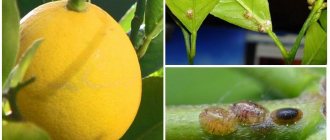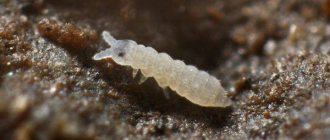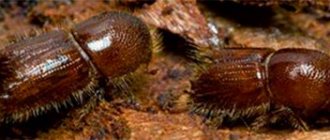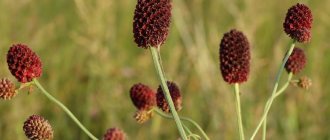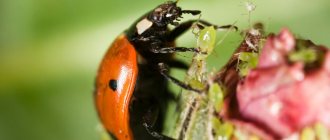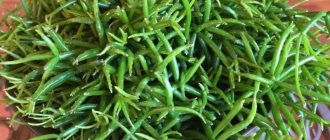general information
The scoop, what is it, is a butterfly - a moth from a very large family, which consists of 15 subfamilies and over 35 thousand species. Night owls belong to the even larger order Lepidoptera , which is represented by a huge number of moths, butterflies and moths.
Cutworm pests are considered the most dangerous and malicious insect of various cultures , despite their absolutely harmless appearance.
What does it look like?
Insect size. The average wingspan is 2.5-3 cm , the minimum is 0.8-1 cm, and the maximum belongs to the moth agrippina - a tropical beauty with a wingspan of about 30 cm. It is one of the largest butterflies among the world's fauna.
The length of the body of the imago is on average 12-15 mm, the length of the larvae (caterpillars) is 3.5-3.9 cm. The length of the pupa is 2-2.3 cm.
Photo of cutworm pest.
Appearance . The head is usually round, with simple antennae and large round eyes; they can be bare or fringed with short and long eyelashes. The proboscis is well developed, twisted in the form of a spiral. It contains taste receptors.
The entire surface of the body (chest, abdomen and head) is densely covered with scales and hairs. Many varieties also have specific tufts of long hairs. They can be located on different parts of the body.
There are brushes on the legs that cutworms use to clean their antennae, spines, and spurs. The auditory organs are located on the back and abdomen and are superbly developed.
The wings are shaped like triangles - rounded, isosceles or elongated. The front ones are always longer than the rear ones and fold into the shape of a roof. In some species, the wings are adapted for long and high-speed flight , therefore they have parallel edges and a long narrow shape.
The coloring is usually inconspicuous; the main color can be beige, gray, chestnut and dark brown. The front wings are painted with round , wedge-shaped and oval spots, transverse lines, and winding stripes.
The hind wings are most often plain, sometimes decorated with discoid spots and a border along the edge of a darker shade. The coloring is often faded, gray or beige, but in some subfamilies the wings are yellow , blue or red.
Cutworms are the only family of insects that have the ability to echolocate. They pick up ultrasound up to 150 kHz. They use this skill simultaneously with visual perception.
Features of development
In the spring, adult flight and mating begin . During this period, the imago requires increased nutrition, which is possible only in the presence of suitable flowering plants.
After this, the female begins to lay eggs every day and continues throughout the entire period of her life. Within a week, caterpillars begin to appear . They are distinguished by their nocturnal activity and strong gluttony.
Having gone through all generations, the spring caterpillar pupates in the summer , hiding under leaves or in the ground. After some time, an adult butterfly emerges from the pupa.
Over the summer, 1 or several generations of pests may appear, depending on the characteristics of the species and weather conditions.
Optimal development conditions.
All types of cutworms prefer warm weather , the most suitable temperature ranges from 21-28°. Reducing it to at least 17-18° causes a decline in the activity of all life processes, in butterflies there is underdevelopment of the products of the reproductive system, and fertility drops significantly.
Many species, in addition, are able to exist only under conditions of high humidity - at least 80%. Given optimal criteria, huge populations of the pest develop.
During wintering, the most favorable conditions are mild winters without severe frosts and a thick layer of snow throughout the cold period.
How long does he live?
The full life cycle of the armyworm takes about 50-70 days in the presence of favorable climatic conditions. A decrease in temperature slows down normal growth and increases development time.
The eggs develop in 4-10 days, the caterpillar goes through 5-6 generations and up to 5 molts , this process takes an average of 14-19 days.
Then the larva pupates and develops underground for about 14-16 days.
The lifespan of the imago after emerging from the pupa lasts from 12 to 25 days.
Scoop eggs
What do they look like?
The eggs are spherical or hemispherical in shape . The top is rounded, the bottom is flattened. The diameter varies from 0.4 to 0.9 mm. The color is most often light - it can be white, cream, light yellow, greenish, blue, pale brown.
The surface is usually ribbed and shiny, sometimes cellular. As they develop, the eggs may darken and change color. For example, bollworm eggs become almost black shortly before the larva emerges.
See photo for what cutworm eggs look like.
Where does it go?
The female hides the eggs, placing them on the ground, in plant debris , on the inside of leaf blades of food or weed plants. The shape of the masonry is irregular and asymmetrical. May be in the form of spots, winding rows and lines.
For additional protection, the female covers the eggs with her own hairs and scales or secretions of special glands.
What is the quantity in the clutch?
Female cutworms are famous for their fertility for good reason. One adult produces from 2 hundred to 3 thousand eggs during its short life. She lays eggs daily, placing them singly or in groups. A clutch can include from 2 to 150 eggs. The quantity depends on the type.
For example, the cabbage cutworm lays a clutch of 100 eggs, and the gamma cutworm lays eggs one or two at a time, with a maximum of 5.
Classification and habitat
The armyworm has taken root in all climatic zones of Russia: from the tundra to deserts and high mountain regions. A fourth of the fauna lives in the Southern Urals.
According to the latest classification, the noctuid family is divided into 2 independent parts: Noctuidae and Erebidae.
There are 19 subfamilies in Noctudae, including:
- cutworms;
- leaf rollers;
- clover;
- hadenines;
- earthen.
The erebid family includes 18 subsections. Cutworms, which cause significant damage to useful plants, are present in both groups.
Larva (caterpillar)
What does it look like?
It has an elongated thick body, most often naked, less often covered with sparse hairs. They can be evenly scattered throughout the body or grouped in small groups.
The main color is green, gray, yellow or chestnut, with purple and pink tints. The pattern is characteristic of the cutworm family , it includes a longitudinal light stripe running along the back, and thinner and darker stripes on the sides.
Photo of cutworm larvae.
The larvae have thoracic legs (3 pairs), abdominal legs (3-5 pairs) and false legs (4 pairs). The youngest and oldest caterpillars often do not have abdominal legs, or they are underdeveloped.
Stages of development.
During the growth process, cutworm caterpillars molt from 3 to 5 times, depending on the species and living conditions. They go through 5 or 6 generations. The larvae of the first two instars are considered young , and the last two instars are considered adults. In many species of cutworms, it is the adult larvae that hide for the winter, which, after emerging, severely damage young shoots, seeds and buds of food plants.
Scoop caterpillars photo.
The stages of development do not differ much from each other in appearance ; only the proportions of the body and head change. The initially large head shrinks and the body elongates. The coloring remains largely unchanged.
How to fight cutworm caterpillars on tomatoes using folk remedies
Liming has proven to be an excellent preventative measure. Not only will it protect you from unexpected insects, it will also make the soil more saturated, and all the added nutrients will be better absorbed in the future. One square of land requires less than a gram of the substance. Please note that when you are planning such a procedure, you need to take into account the weather forecast.
If the vegetables are already ripe, then it is better to collect the caterpillars by hand or use exclusively folk methods of control.
The best times will be days with minimal wind force. In addition, these individuals cannot tolerate too strong aromas. So, beds with cilantro and basil will help you. For the same reason, ammonia is used by gardeners. It is enough to spray it on tomato bushes. Such a trail will force insects to stay away from your plantations. And it won’t harm the fruits; on the contrary, it will become a fertilizer.
When the cutworm caterpillar appears on tomatoes , garlic water will help get rid of it. Collect the green part of the garlic in a bucket; it should be filled to the top. Then fill it all with water and let it stand in the heat. When the fermentation process begins, the product is ready. It should be diluted in a ratio of one to ten. And use this solution for irrigation.
In the same way you can use potato tops, burdock, or chamomile. Folk inventions of this kind also include powdering bushes and fruits. This should be done using well-chopped tobacco. There is another option - turn to manual labor and painstakingly collect individuals from the bushes. Subsequently they are subject to destruction.
When this attack has just begun its march along the ridges, it can work. But if it has already spread sufficiently, use more effective methods. The cutworm has a natural enemy - Trichogramma. These are tiny bugs. If you manage to shelter them on your property, they will help evict uninvited guests. These human allies act “from within.” They give birth to their offspring inside the noctuid eggs.
Trichogramma are natural enemies of the cutworm
What does it eat?
During the period of flight and mating, the imago feeds on pollen of flowering plants without causing them the slightest damage. The armyworm and its caterpillars are a serious problem, eating above-ground parts and destroying plants.
Cutworm caterpillars fall into three categories:
- Intrastem - settle in thick stems and feed on their contents, causing the death of the entire plant.
- Gnawing - live in the ground, gnawing roots and basal parts.
- Leaf-eaters - live on plants, eating all the green mass - leaves, young stems and shoots, buds and inflorescences. Most representatives of the noctuid species fall into this category.
Owl butterfly photo.
What plants does it damage?
The noctuid family consists almost entirely of polyphages. The cutworm is classified as a pest of cereals, vegetables, ornamentals, fruit pome and stone fruits , industrial crops, legumes, cruciferous crops, oilseeds, berries, conifers, greenhouse crops, greenhouse crops, grapevines, perennial grasses, lawns, nurseries and meadows.
In general, we can say that the percentage of plants that do not attract cutworm caterpillars is very small .
How to fight cutworm caterpillars on potatoes using folk remedies
Catching. This is where to start the war against this enemy. When looking for information on how to control cutworm caterpillars , try to eliminate the moths. To do this, use traps. No special tricks are needed. You will need a regular plastic bottle, or any other container into which you can pour something sweet.
The main thing is to create a wide opening. Spoiled jam will work as bait. Its aroma will make a butterfly land on the surface of the fermented product. And the individual will no longer be able to take off, as it will stick. If at the time of your next check the living creatures caught in this way are still alive, you need to destroy them.
If you don’t want to bother like that, then you can just go to the household. market and become the owner of an insect trap. This is special. adhesive tapes. Moreover, they have a special impregnation that attracts dangerous individuals. As a result, they find themselves tightly stuck to the viscous composition.
We've sorted out the winged ones, but what to do if the night armyworm caterpillar attacked the plantings? Various hazardous effects on products can be avoided. As mentioned above, either the eggs or worms of this pest spend some part of their lives in the ground. Therefore, loosening will be an unpleasant surprise for them.
This procedure will destroy the tunnels that the crawlers have made. This means their life will become more difficult. The same goes for digging. Before the frost hits, take a good walk through the field or bed with a shovel. Repellers can also be used. To make one, you only need wormwood and water.
For three liters of liquid you need to take a kilogram of weed. All this should boil for at least a quarter of an hour. The first watering with this decoction should be done before flowers appear on the bushes. The matter will not stop there; in a couple of weeks we need take two. These “rodents” will not want to approach such plantings, that’s for sure.
Another preventative measure is weeding. It needs to be done as early as possible. Then the flying “villains” will have much less food to feed on and lay eggs. Try to get rid of wheatgrass, bristle grass and other weeds. You also need to pump the soil with fertilizers on time. Nitrogen creatures especially do not like these creatures. So, if there are enough of them in the soil, the gray cutworm caterpillar will feel very bad.
What harm does it cause?
Cutworms have long been considered dangerous pests of various crops ; some species are classified as a quarantine type. These are bollworms, meadow cutworms, Asian cottontail cutworms, cabbage cutworms and Finnish cutworms.
To completely destroy 10 plants overnight, only 2-3 to 7-8 caterpillars of different species are required. Therefore, the damage caused by cutworms is colossal and amounts to up to 100% of the entire harvest.
Some species are also barn pests. Once in storage, they do not die, but continue to feed on the grain placed in storage . To such types of cutworms as grain and ordinary grain, dry grain seems no worse than fresh grain.
It should be borne in mind that the better the living conditions, the more fertile the females, the more active the caterpillars, the faster the destruction of poor plants occurs. The greatest damage is caused by the older caterpillars of the latest generations.
How to fight cutworm caterpillars on tomatoes using chemicals
The most popular on this list is Fitoverm. He deserves this due to the fact that he is practically harmless to humans. In addition, it does not concentrate in the ground. Those. worked and disappeared. In order to use it, you need to dilute four milliliters in two liters of water. When all this is thoroughly mixed, pour in another ten liters of liquid.
Spray the affected plantings with the resulting mixture. Since the drug is bacterial, there is no need to be afraid to eat fruits after such exposure. After just three days you can eat tomatoes. The insecticidal agent "Fufanon" is also in use. It is relatively safe, as long as you strictly follow the instructions.
After such treatment, it takes a day for the individuals that settled on the plantings to die. They are simply poisoned. If the bushes sit outside, then a couple of treatments will be enough. Greenhouse plants may need three. The most important thing to remember is that extreme processing is a maximum of three weeks before you eat the fruit.
Another less dangerous composition, Lepidocide, is also capable of killing crawling creatures in just a week. It acts in the intestines of the pest, gradually destroying it. The product is not afraid of heat, it does not affect its properties in any way. In addition, dangerous gluttons cannot develop immunity to it, so the composition can be used repeatedly.
After five days, the tomato can be consumed without any problems. True, there is one “but” - the composition does not adhere well to the treated surface. The drug "Inta-Vir" will provide double action. Not only will it cope with crawling creatures. It will also scare away the winged ones. It is worth remembering that insecticides of hazard class 4 evaporate most quickly from the surface and tissues of plants.

